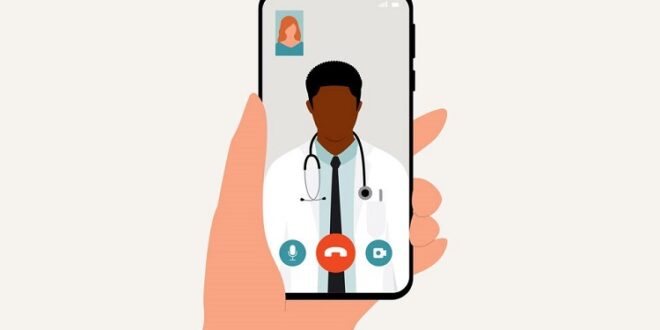The healthcare industry is constantly evolving, and it’s important to stay informed on the latest trends. With the right information, you can prepare for upcoming changes and remain ahead of the curve. 2023 promises to be a pivotal year in healthcare. From new technologies to increased access to care, there are plenty of exciting trends that will shape the future of this vital sector. In this blog post, we will take a look at some of the most noteworthy healthcare trends for 2023: what they are, why they’re important, and how they could impact healthcare providers and patients alike.
-
Telehealth
Telehealth is one of the latest healthcare trends that is gaining popularity. This type of care allows patients to receive care and treatment from a distance using telecommunications technology. This can be beneficial for those who live in rural areas or who have difficulty accessing healthcare due to transportation issues. It can also be helpful for busy people who cannot take time off work or away from their families to go to appointments.
The global telehealth market size was valued at USD 93.5 billion in 2023 and is projected to expand at a compound annual growth rate (CAGR) of 28.0% from 2023 to 2030.
-
AI in Healthcare
AI is one of the latest healthcare trends that shows great promise for transforming the industry. In healthcare, AI can be used to help improve patient outcomes, reduce costs, and increase efficiency. For example, AI can be used to create personalized treatment plans, diagnose diseases earlier, and provide real-time feedback to doctors. Additionally, AI can help schedule appointments, automate administrative tasks, and improve communication between patients and providers. The artificial intelligence in healthcare market in the current year (2023) is projected to grow from USD 9.9 billion to reach USD 87.4 billion by 2029; it is expected to grow at a compound annual growth rate (CAGR) of 49.2% by 2029.
-
3D Printing in Healthcare
In recent years, there has been a lot of hype surrounding the potential of 3D printing in healthcare. While the technology is still in its early stages, there are a number of ways that it is being used to improve patient care and outcomes. Here are some of the latest trends in 3D printing in healthcare:
Medical implants and prosthetics: One of the most promising applications of 3D printing in healthcare is the ability to create custmised medical implants and prosthetics. This could potentially revolutionise the way we treat patients with complex conditions such as limb loss.
Tissue engineering: Another area where 3D printing is being used is in tissue engineering. This involves creating living tissues and organs from scratch using a combination of cells, biomaterials and scaffolds. This could be used to treat patients with conditions such as heart disease or diabetes.
Drug development: 3D printing is also being used to develop new drugs and medicines. This includes creating customised dosages for individual patients, as well as developing new drug delivery methods such as patches and inhalers.
These are just some of the latest trends in 3D printing in healthcare. As the technology continues to develop, there will no doubt be even more exciting applications for it in the future. For latest market research report on healthcare industry and stay upto date with latest market research.
-
Precision Medicine
Precision medicine is a rapidly emerging field of healthcare that involves the use of personalized, data-driven approaches to disease prevention and treatment. By taking into account each patient’s unique genetic makeup, lifestyle, and medical history, precision medicine aims to tailor treatments to individual needs—and ultimately, improve patient outcomes.
In recent years, precision medicine has made significant strides in cancer care. For example, the Food and Drug Administration (FDA) has approved several “targeted therapies” that are designed to specifically attack cancer cells while sparing healthy ones. These therapies are often more effective and have fewer side effects than traditional chemotherapy drugs.
Looking ahead, precision medicine is expected to play an increasingly important role in the treatment of other diseases, such as heart disease, diabetes, and Alzheimer’s disease. As more data is collected on patients’ genomes and health histories, researchers will gain a better understanding of how best to personalize care for each individual.
-
The Rise of Wearable Devices
Over the past few years, wearable devices have become increasingly popular. More and more people are using them to track their fitness levels, monitor their sleep, and even receive notifications and phone calls. While some people are skeptical of these devices, others find them invaluable.
One of the most popular wearable devices is the Fitbit. This device tracks your steps, distance, calories burned, and active minutes. It also has a heart rate monitor and can track your sleep. The Fitbit is available in a variety of colors and styles to suit your needs.
Another popular device is the Apple Watch. This device does everything from tracking your fitness levels to giving you directions. It also has a built-in heart rate monitor and can make phone calls, send texts, and even stream music. The Apple Watch is available in two sizes and three different versions: the Sport, the Edition, and the Hermes.
If you’re looking for a more affordable option, there are many other brands that offer similar devices. For example, the Garmin Forerunner 235 is a GPS running watch that also tracks your heart rate and activity level. It’s available in several different colors to match your style.
No matter what your budget is, there’s a wearable device out there that’s perfect for you. So if you’re looking to stay up-to-date with the latest healthcare trends, be sure to check out wearable devices!
Conclusion
It is clear that the healthcare industry is changing rapidly and there are many trends to watch out for in 2023. From virtual health clinics and telemedicine solutions to AI-driven diagnostics and personalized medicines, these technologies have the potential to revolutionize healthcare delivery models. As such, it’s essential that healthcare organizations stay on top of the latest developments so they can provide their patients with timely, effective care. With any luck, we’ll be seeing more innovations emerge as technology continues to evolve at a rapid pace over the next few years.
 HammBurg Be informed with latest news, reviews, entertainment, lifestyle tips, and much more.
HammBurg Be informed with latest news, reviews, entertainment, lifestyle tips, and much more.




